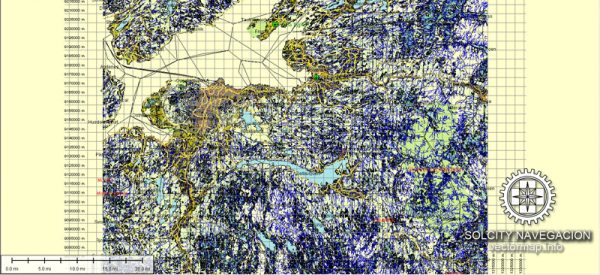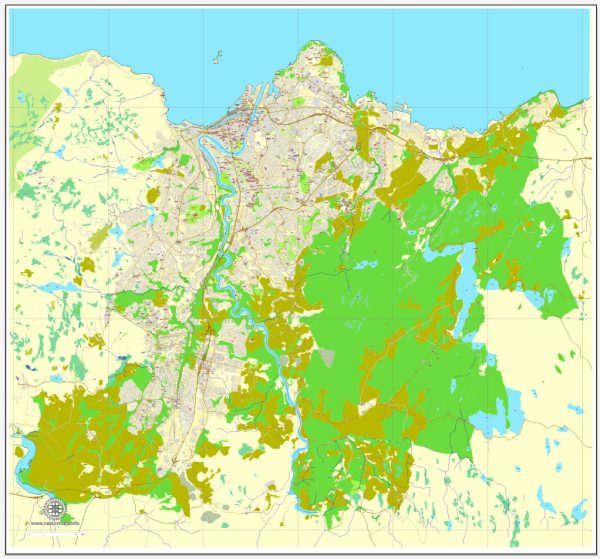Trondheim, Norway, is the third-largest city in the country and has a rich history dating back over a thousand years. Its urban development reflects a blend of modernity and historical preservation, creating a unique and vibrant cityscape. Here is a description of Trondheim’s urban development:
- Historical Architecture: Trondheim is known for its well-preserved historic architecture. The city’s Nidaros Cathedral, a stunning example of Gothic architecture, serves as a focal point and dates back to the 11th century. Throughout the city, you’ll find charming wooden houses, cobbled streets, and colorful buildings that add to its historic charm.
- Waterfront Districts: The city is situated on the shores of the Trondheim Fjord, and its waterfront districts have seen significant development. The Brattøra and Solsiden areas have been transformed into trendy, modern urban spaces, with shopping centers, restaurants, and residential buildings, while still maintaining a connection to the water.
- Sustainable Transportation: Trondheim has a strong commitment to sustainable transportation. Bicycles are a common mode of transportation, with dedicated bike lanes and rental programs. The city also has an efficient tram and bus network, making it easy for residents and visitors to move around without relying on cars.
- University Campuses: Trondheim is home to the Norwegian University of Science and Technology (NTNU), and the presence of the university has played a significant role in shaping the city’s development. The campuses are integrated into the city, contributing to a youthful and dynamic atmosphere.
- Green Spaces: Despite its urban character, Trondheim offers plenty of green spaces and parks. The city’s proximity to nature allows for outdoor activities, and it has several parks like Bymarka and Kristiansten Fortress, offering beautiful views of the city.
- Cultural Hubs: Trondheim is a cultural hub with numerous museums, galleries, and theaters. The city hosts festivals, concerts, and events throughout the year, contributing to its vibrant cultural scene.
- Modern Developments: Trondheim has seen modern developments in recent years, with contemporary architecture and infrastructure projects aimed at accommodating the city’s growing population and improving its livability.
- Waterfront Revitalization: The revitalization of the waterfront areas, including the redevelopment of the old shipyard at Nedre Elvehavn, showcases a commitment to creating attractive public spaces along the riverbanks.
- Innovation and Technology: Trondheim has a strong focus on innovation and technology. It’s part of the Norwegian “Smart Cities” initiative, aiming to use technology and data to improve urban services, transportation, and sustainability.
- Tourism and Hospitality: Tourism plays a significant role in Trondheim’s urban development, with numerous hotels, restaurants, and services catering to visitors. The city’s historical sites, as well as its natural surroundings, attract both domestic and international tourists.
Trondheim’s urban development is a testament to its ability to blend its rich history with modern amenities, sustainable practices, and a strong commitment to maintaining its natural surroundings. It is a city that continues to evolve while preserving its unique character and quality of life.



 Author: Kirill Shrayber, Ph.D.
Author: Kirill Shrayber, Ph.D.